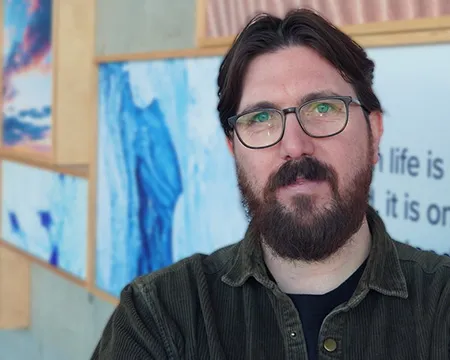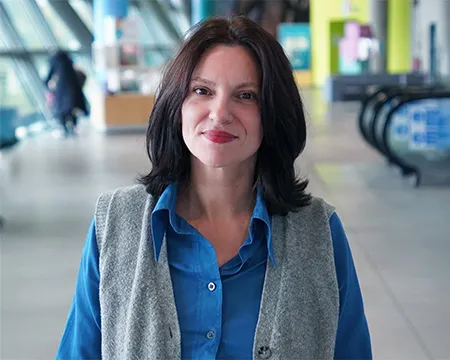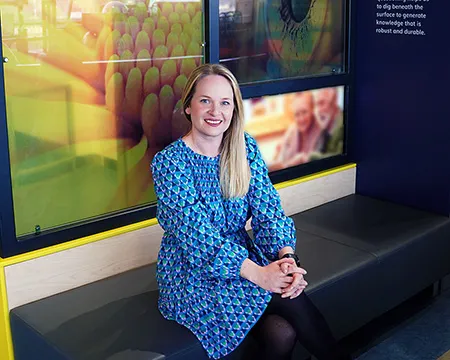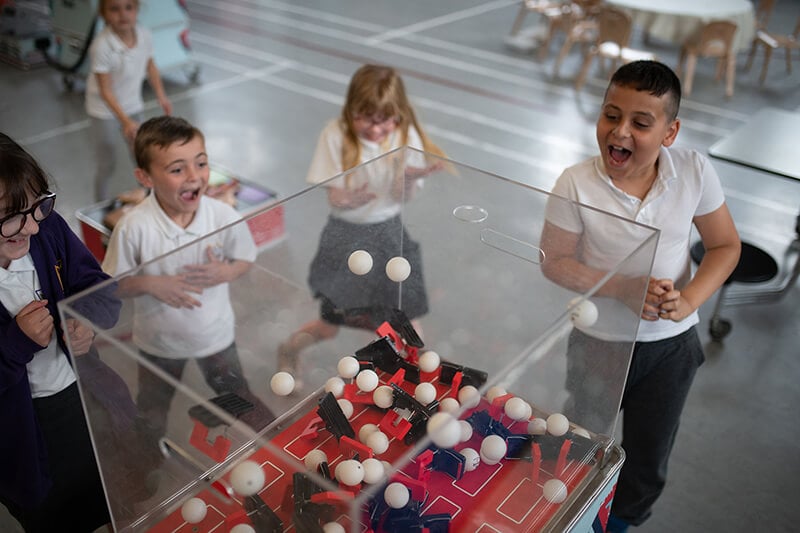Dear Green Place
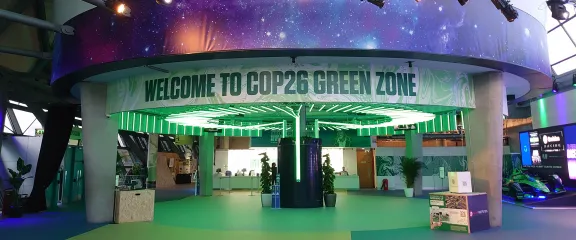
COP 26 may be at an end but the story of the conference’s legacy has only just begun for the city. Dr Stephen Breslin, Chief Executive of Glasgow Science Centre shares his highlights of an event which gripped the entire world.
Glasgow Science Centre has just had the busiest fortnight in its 20 -year history. A global spotlight shone on our iconic titanium-clad building and its Clyde-side setting which hosted the Green Zone during the United Nations COP26 Conference. The Green Zone was the window into the diverse world of climate action. From all over the planet, youth activists, Indigenous Peoples, small and large businesses and grass roots communities gathered on the Clyde-side, bringing COP 26 to life. Every inch of the Science Centre and its surrounding area was used. The starlit dome of the planetarium, the Science Show Theatre and the IMAX cinema provided a backdrop for cultural performances, exhibitions, talks, film screenings and technical demonstrations. 36,000 visitors from all over the world enjoyed 16 events a day for every one of the 12 days of the conference.
This was no mean feat to organise and deliver. Every single staff member staff rolled up their sleeves to ensure that visitors enjoyed the warmest of Glasgow welcomes. Employees with a back-office job suddenly found themselves front of house, taking coats and hosting international guests. The building’s huge glass atrium was filled daily with the sounds of pipe bands, choirs and indigenous musicians. The music may have sounded dramatically different from hour to hour but the message of each song was the same -how can we save the planet?
There was a real buzz and excitement in the city but there was a palpable sense that the planet was balancing on a tightrope. Every day saw a roll call of famous and exciting names attend the Green Zone. At one point, we had Prince William and other well-known personalities, all in the building at the same time. Everyone, no matter how famous and important, was united in a common purpose. For me though, the most memorable moments came from seeing the involvement of families and children. The true value of the conference was thrown sharply into focus when I went to the Youth Rally in George Square. I saw so many young people and ordinary families pushing buggies. The air of urgency and optimism was unforgettable. This was a penny-dropping moment. In other words, young people drive change. They are the ones who hold politicians and policymakers to account.
One of the Green Zone’s youngest visitors I met was Callum Isted (7) who had won an Education Scotland Learning for Sustainability award. Callum is campaigning for all primary schoolchildren to be provided with a reusable water bottle. He walked the John Muir Way (134 miles stretching from Helensburgh to Dunbar) to raise money for his schoolmates to receive a stainless-steel water bottle. Callum came to Glasgow Science Centre to talk to MSPs about his quest.
Callum just lit up when he attended one of the talks by the British Antarctic Survey. I saw the same reaction when the environmentalist Chris Packham was talking to schoolchildren about the importance of fox poo! They were enthralled and seeing that had a lasting impact on me. Teaching our children to love and cherish their environment is an essential part of our jobs and COP26 showed just how important it is to help children voice their fears about the planet.
Now COP 26 is over, the question remains. How can we ensure that our Dear Green Place is truly green for future generations?
Every sector of industry, every way of life, every religious leader was represented at the Green Zone. For an event which was two years in the planning in the shadow of a pandemic, everyone at Glasgow Science Centre felt the responsibility very keenly to make it the best it could possibly be. We all saw the building, the Clyde and the city in a whole new light. For all the hard work and long days, everyone found it very moving. It is clear that ordinary people can and must be agents of change. We have a renewed sense of determination to help young people articulate their anxieties about the environment.
For Glasgow Science Centre then, the work of the conference has really just begun.
This blog post is adapted from an article that first appeared in Glasgow Times in November 2021.

